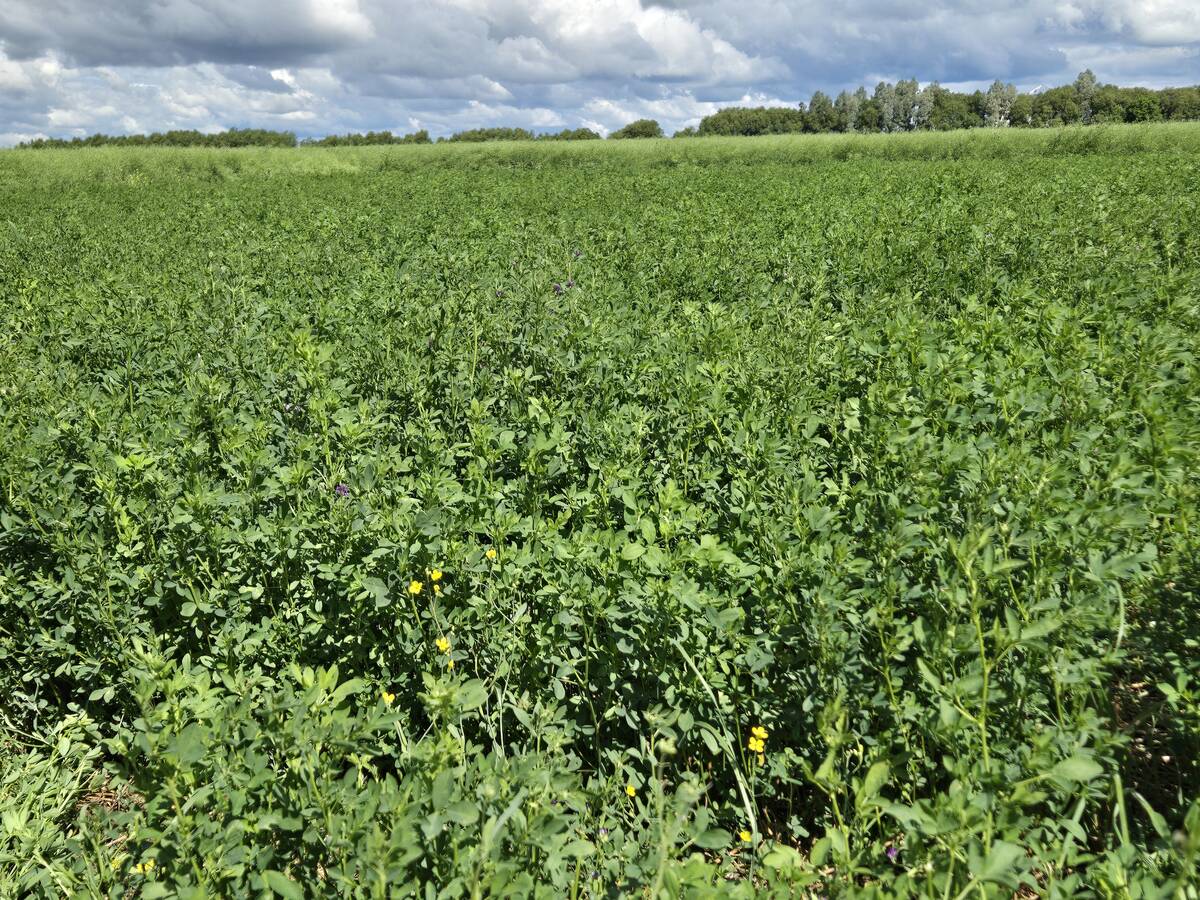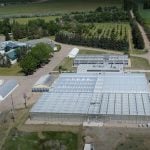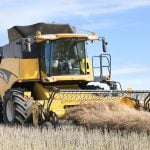Climate major factor | South Dakota became sixth largest corn producing state last year and North Dakota is now in Top 10
CHICAGO, Ill. (Reuters) — Long-term warming trends, improved seeds and soaring profits have sparked a corn boom in the northern U.S. Plains that might one day turn North and South Dakota into the new Iowa.
“All you need to do is look on a research footprint map of the United States and Canada and compare where we are today to where we were 10 years ago, and you would see the movement from the north to the west,” said Paul Schickler, president of DuPont Pioneer.
The core of the traditional U.S. corn belt lies across Iowa, Illinois and Indiana, which together produce more than one-third of the nation’s corn, used mainly to feed livestock and produce ethanol.
Read Also

Manitoba Parkland research station grapples with dry year
Drought conditions in northwestern Manitoba have forced researchers at the Parkland Crop Diversification Foundation to terminate some projects and reseed others.
Corn is the largest U.S. crop, and the United States is the world’s biggest supplier.
Until recently, corn planting in the Dakotas was limited because of the region’s more northern latitude and comparatively dry conditions, both of which shortened the growing season too much for corn.
Spring-planted wheat was the favoured alternative.
But by 2012, South Dakota had become the sixth-largest corn-producing state, while North Dakota elbowed its way into the Top 10 for the first time, out-producing Wisconsin, where corn is central to the state’s dairy economy.
What has changed? The climate, for one.
Average temperatures in the Dakotas have been warming steadily for decades, according to weather records. Equally significant, annual precipitation has, on average, in-creased since around 1990.
Also, farming practices have improved, with seed companies producing corn hybrids customized for the shorter growing season.
“We are trying to expand geographies where we can grow corn,” said Mike Gumina, a vice-president with DuPont Pioneer and a past chair of the American Seed Trade Association.
While older varieties of corn might take 120 days to mature, Gumina said 90 and 80 day varieties are “fairly commonplace” today.
The ethanol boom has been the other big change in the last five years.
Farmers are trying to cash in on corn prices that have doubled since 2006, the last year before a change in the U.S.
Renewable Fuels Standard mandated an increase in the amount of ethanol that oil refiners must blend into gasoline.
“There is tremendous demand for corn right now, and certainly corn has risen to the top as the farm product with the highest value and demand,” said Nathan Franzen, president of the First Dakota National Bank’s agribusiness division in Yankton, S.D.
“I believe corn has developed into a superior plant because of the wide uses and the flexibility it has.”
However, the allure of ethanol has faded recently. Falling profit margins and rising corn costs had prompted ethanol manufacturers to idle 15 percent of U.S. plants by January. Several plants have started producing again as margins recover.
Farmers in the Dakotas are expected to earn fatter returns from corn than from any other crop in 2013, just as they did in 2012. As a result, analysts expect farmers in both states to sow a record number of corn acres for a second straight year.
“Based on what I am hearing from our clients today, there will be more corn,” said Mike Krueger, president of the Money Farm, a crop advisory service near Fargo, N.D.
North Dakota State University economists project that farmers in North Dakota’s Red River Valley, the state’s best land for corn, will net $176 per acre in 2013, compared with estimated returns of $122 for soybeans and $86 for spring wheat.
South Dakota farmers planted corn on 6.15 million acres in 2012, up 37 percent from 2006.
In North Dakota, corn acreage has doubled since 2006 and quadrupled since 2001.
“We’ve been planting corn in some pretty adverse conditions for several years, and even in a really tough year, we see a better return (on corn) than some of the traditional crops,” said Bart Schott, a farmer from Kulm, North Dakota and a past president of the National Corn Growers Association.
U.S. farmers planted 97 million acres of corn in 2012, the most in 75 years. Iowa was the top state with 14.2 million acres.
Average temperatures in North Dakota have been rising for decades, expanding the growing season by 12 days over the past century, said Adnan Akyuz, an assistant professor of climatology at NDSU and the state climatologist.
A longer growing season allows corn plants more time to photosynthesize, which boosts yields.
Corn’s spread has also been encouraged by increased average precipitation since 1990 and the adoption of no-till farming techniques that conserve soil moisture, said Jerry Hatfield with the U.S. Department of Agriculture’s National Laboratory for Agriculture and the Environment in Ames, Iowa.
Annual statewide precipitation in North Dakota averaged 596 milli-metres in the 1990s and 569 mm in the 2000s, compared with 508 mm during the 1980s, according to data from Lanworth, a unit of Thomson Reuters.
“When you get a little bit more water and you’re very conservative with that water, then you can go into crops like corn and soybeans that have a higher water use requirement,” Hatfield said.
Climate scientists caution that moisture will be a wild card as the corn belt expands northward.
Temperatures are expected to continue rising, but the wetter trend is far from assured. Corn requires more water than wheat.
“All the models agree that temperatures in the Dakotas are going to warm pretty substantially over the current century,” said Gene Takle, director of Iowa State University’s climate science program and a co-ordinating author of the 2013 U.S. National Climate Assessment.
“But the real question is whether the drying pattern that is very likely to intensify over the western half of the country is going to dominate.”
The expansion of corn in the Dakotas has had significant effects for farming and the energy industry.
The chase for higher returns has meant a massive switch by wheat farmers to corn.
















